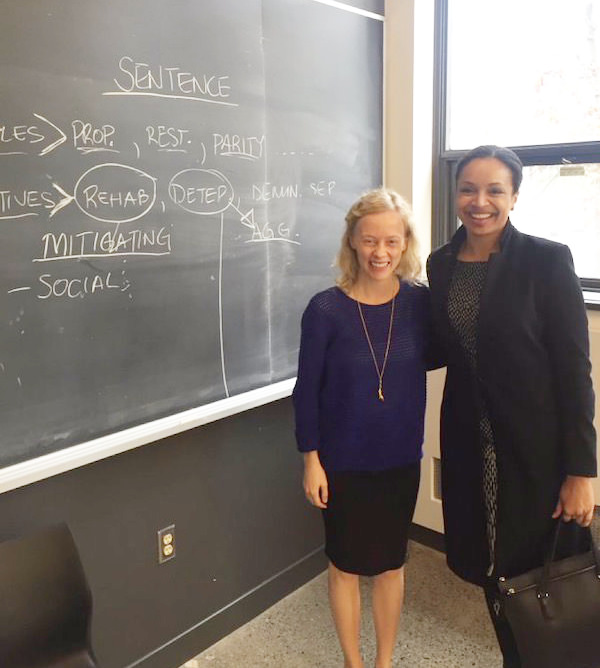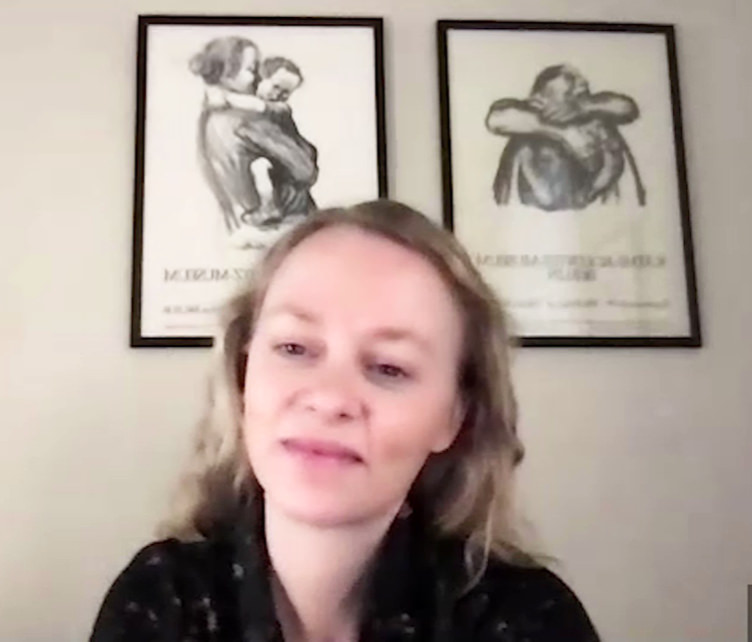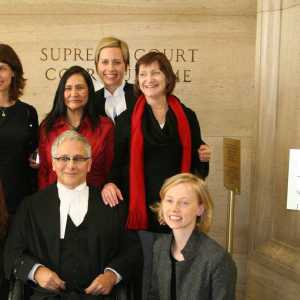"A New Justification for Section 12 Hypotheticals and Two Rules for Constructing Them" (with Michael Perlin) (2025) 5 S.C.L.R. (3d) 179-204 "The Place of Gladue in Constitutional Law" Constitutional Forum 33.1 (2024) "Reconstructing Gladue" (2024) University of Toronto Law Journal (with Benjamin Ewing) Section 718.2(e) of the Criminal Code directs sentencing judges to exercise restraint in the use of incarceration ‘with particular attention to the circumstances of Aboriginal offenders.’ In R v Gladue, the Supreme Court of Canada interpreted this as a remedial provision aiming to reduce the incarceration of Indigenous people. That has made it appear to be a failure by its own lights. Yet to write off section 718.2(e) and the Gladue principles would be to fail properly to understand their moral foundations and structure. Judges are called upon to reduce the incarceration of Indigenous people neither by working backwards from prison demographic targets nor merely by combating implicit bias. Rather, Gladue requires judges to open their minds to hitherto unappreciated reasons that many Indigenous offenders should be afforded mitigation, restorative justice, and community-based accountability. One reason, we argue, relates to the unfair criminogenic disadvantages disproportionately faced by Indigenous offenders. Another reason is that the Canadian state’s complicity in such disadvantages calls into question its legitimate authority and its standing to blame Indigenous offenders. In sum, Gladue calls upon our courts to widen the horizon of fairness in their treatment of Indigenous people. This matters for its own sake in each and every case, whether or not it brings about an appreciable reduction in Indigenous incarceration in the aggregate. Our reconstruction of Gladue not only rescues it from cynical dismissals but also helps to solve the central doctrinal puzzles surrounding it: how Indigenous offenders’ unique life circumstances must be connected to their offences to be mitigating; how Gladue principles should apply differently to more and less serious offences; how a variant of Gladueprinciples should be extended to members of other disadvantaged groups such as Black Canadians; and how judges should weigh the interests of Indigenous victims when sentencing Indigenous offenders.
"The Conditional Sentence Returns to Our Hybrid Penal-Welfare State" (2023) 90 Criminal Reports (7th) 324–342 “Dignity Cannot Be Totally Denied: The Limits of Bissonnette” (2022) 81 Criminal Reports (7th), 330–342 “The Pains of Imprisonment in a Pandemic” (2021) 46 Queen’s Law Journal 2, 327–342 (with Kristy-Ann Dubé) This article examines how the law of punishment has responded to the impact of the COVID-19 pandemic on jails and prisons. While detention has become more severe and risky for all who live and work in correctional institutions, there has been significant variation in judicial willingness to recognize these systemic impacts. Often courts limit protection to those able to adduce evidence that they will become seriously ill or die from COVID-19. First, the authors discuss the approach taken by individual judges to bail, observing (1) cases where judges take judicial notice of the heightened risks and severity of imprisonment for all inmates during the pandemic, and (2) cases that require the accused to establish that they are at increased risk before COVID-19 can weigh heavily on the decision to detain. Second, the authors discuss a similar story of variation in how judges have responded to the effect that pandemic conditions should have on the calculation of credit for pretrial detention. Finally, they discuss the impact that COVID-19 has had on sentencing, where judges are more willing to consider how the pains of imprisonment have been intensified during the pandemic in a way that impacts the question of a fit or proportionate sentence of custody.
“Methods and Severity: The Two Tracks of Section 12” (2020) 94 S.C.L.R. (2d) 235 (co-authored with Benjamin Berger) This paper argues that there are two main routes – two tracks – by which one can arrive at the fundamental wrong at the heart of section 12 of the Charter. On the “methods track”, the state can run afoul of section 12 by using intrinsically unacceptable methods of treatment or punishment. For historical reasons, jurisprudence on this track is not well developed in Canada, though it would clearly prohibit the death penalty and most methods of corporal punishment. On the “severity track”, the concern is with excessive punishment. Here, even where the state has chosen a legitimate method of punishment, like fines or imprisonment, the amount of punishment may be grossly disproportionate in light of factors like the gravity of the offence and the circumstances of the offender. To date, the distinction between the two tracks, and its implications for section 12 analysis, has gone unrecognized in the caselaw and scholarship alike. Carefully drawing this distinction, and identifying the par…
"Adjudicating the Risks of Confinement: Bail and Sentencing During COVID-19" (2020) 64 Criminal Reports (7th), 311–333 (with Kristy-Ann Dubé) "The End Stage of Solitary Confinement” (2019) 55 Criminal Reports (7th) 382. "How the Prison is a Black Box in Punishment Theory" (2019) University of Toronto Law Journal Vol. 69, Issue 1, 85-116 The field of punishment theory promises to deal with the question of whether state punishment can be justified and on what grounds. In this field, punishment is rarely conceptualized as imprisonment. Even in the more practical subfield of sentencing theory, the realities of prison conditions rarely appear. Legal actors borrow the vocabulary of punishment and sentencing theory, proceeding as if theories speak to and justify the practice of imposing custodial sanctions and imprisonment generally. This article tries to explain how the fields of punishment and sentencing theory largely avoid the prison. The question, in a sense, is how a field can evade what is ostensibly its own subject matter. What this critique means is that sentencing authorities and other legal actors should turn away from punishment theory – or should look well beyond its boundaries – when they are thinking through the legitimacy and severity of the custodial sanctions they are imposing and administering.
"Sentencing Ashley Smith: How Prison Conditions Relate to the Aims of Punishment" (2017) Canadian Journal of Law and Society Vol. 32, No. 2, 187–207 Ashley Smith’s experience in the adult prison system flowed from certain of its systemic features. This article considers whether and how it is possible to reconcile the basic commitments of sentencing law, including the legal aims of punishment, with that systemic portrait. The youth court that ordered Smith’s transfer to adult custody relied upon an idealized conception of adult imprisonment, just as ordinary adult sentencing courts do. Judges purport to stipulate the severity of punishment , but tend not to consider how prison conditions will shape the severity of the sanction. Even where a particular defendant is likely to face unique difficulties in custody, courts tend to take notice in limited and rare ways. Smith’s experience in adult custody challenges us to more clearly identify, and to consider extending, doctrinal sentencing rules that represent a judicial concern with the effects and prospects of imprisonment in particular cases.
“The Legitimate Scope of Criminal Law: A Question for Legal History?” (2017) Critical Analysis of Law, Vol. 4, No. 1, 11–21 Lindsay Farmer argues that criminal law theory is too abstract and decontextualized to achieve the task it sets for itself. In order to articulate the legitimate boundaries of criminal law, theorists must consider specific legal rules in historical context. Farmer declines to announce a new, universal theory of the proper scope of criminal law, but he shows that studying the institutions and social functions of criminal law over time can generate normative insights. This review uses the example of prostitution to explore these claims.
"'They Want In': Sex Workers and Legitimacy Debates In the Law of Public Interest Standing" (2017) 80 Supreme Court Law Review (2d) 145–175 “Judging a Joint Submission: Comparing the US and Canada on the Judicial Role in Plea Bargaining” (2017) 32 Criminal Reports (7th), 22–30 “The Right to Maximum Prisoner Liberty?” (2016) 26 Criminal Reports 7th, 245–250 “Easy Prisoner Cases” (2015) 71 Supreme Court Law Review (2d) 235-262 "The Chronic Failure to Control Prisoner Isolation in US and Canadian Law” (2015) Queen's Law Journal, Vol. 40, No. 2, 483–530 The decision to place a prisoner in isolation can profoundly intensify the severity of a legal sanction of imprisonment. While the Canadian legislative regime offers some protections, prison officials are empowered with broad discretion to make this decision with no judicial input. Strikingly, prisoners can be placed in isolation for indefinite periods of time, which has invited critical scrutiny. Litigation under the Canadian Charter of Rights and Freedoms could challenge the current Canadian scheme, but the US experience of litigating solitary confinement warns of the limits of some forms of judicial intervention as a means to generate effective controls over this practice. In response to extreme forms of solitary confinement, American courts have only articulated minimal constraints and narrow individual exemptions—no court has found the basic practice of indefinite isolation to be constitutionally barred, and it is currently used on a widespread basis. The American example sheds light on the possibilities of litigation as a method of penal reform and reveals a judicial tendency to police only peripheral issues without addressing fundamental flaws in prevailing penal practices. Canadian prison legislation already includes many of the same protections that have been extracted from US courts, but essential protections remain absent in both countries. Law reform efforts should aim for a judicial declaration that prohibits isolation for indefinite and excessive terms, and mandates external oversight over all forms of isolation.
“The Origins of Unlawful Prison Policies” (2015) Canadian Journal of Human Rights, Vol. 4, No. 1, 91-119 Prison administrators are granted discretionary powers to enable them to manage institutions and pursue legal and policy mandates. The use of delegated power is essential to prison management, but there can be a tenuous relationship between the exercise of penal administrative power and the rules and principles of the wider legal order. In 2003, the Correctional Service of Canada used its power to design the Management Protocol, a penal program specifically for women which served to deprive a small number of mostly Aboriginal women of ordinary prisoner rights and privileges. The Protocol emerged with no legislative attention or public scrutiny. Over time, external critique and advocacy eroded the legitimacy of the Protocol and subjected it to legal challenge. The Protocol was cancelled following the filing of a 2011 lawsuit, confirming a widely held view that the program violated its legislative mandate as well as broader constitutional principles. The history of the creation, implementation, and cancellation of the Protocol allows us to examine the relationship between formal legal boundaries and the rules and discretionary judgments emanating from within the prison bureaucracy, along with the social and legal processes by which boundaries are finally enforced.
“Contesting Expertise in Prison Law” (2014) McGill Law Journal Vol. 60, No. 1, 43-94 Prisons present a special context for the interpretation of constitutional rights, where prisoner com- plaints are pitched against the justifications of prison administrators. In the United States, the history of prisoner rights can be told as a story of the ebb and flow of judicial willingness to defer to the expertise- infused claims of prison administrators. Deference is ostensibly justified by a judicial worry that prison administrators possess specialized knowledge and navigate unique risks, beyond the purview of courts. In re- cent years, expansive judicial deference in the face of “correctional expertise” has eroded the scope and viability of prisoners’ rights, serving to restore elements of the historical category of “civil death” to the legal conception of the American prisoner. In Canada too, courts have often articulated standards of extreme deference to prison administrators, both before and after the advent of the Charter of Rights and Freedoms, and notwithstanding that the Charter places a burden on government to justify any infringement of rights. Recently, however, two cases from the Supreme Court of British Columbia mark a break from excessive deference and signify the (late) arrival of a Charter-based prison jurisprudence. In each case, prisoner success depended on expert evidence that challenged the assertions and presumed expertise of institutional defendants. In order to prove a rights infringement and avoid justification under section 1, the evidence must illuminate and specify the effects of penal techniques and policies on both prisoners and third parties. The litigation must interrogate the internal penal world, including presumptions about the workings of prisoner society and conceptions of risk management.




























